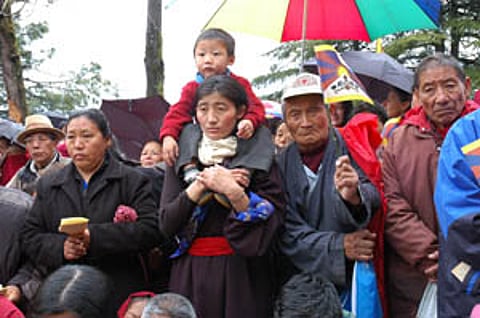Until the last Tibetan
On a cold and wet Saturday morning a few weeks ago, several thousand of us exile Tibetans gathered once again with our leader, the Dalai Lama, in the courtyard of the main temple in Dharamsala to commemorate the anniversary of the Lhasa Uprising of 10 March 1959 – the event that triggered our exodus to India, and sealed China's occupation of our homeland. As with every 10 March commemoration, speeches were made and songs were sung to remember those who gave their lives in pursuit of Tibet's freedom.
In his statement this year, the Dalai Lama once again reiterated his commitment to the Middle Way approach – his proposal to resolve the Tibet issue by making the key concession of giving up demands for independence, in return for a genuinely autonomous Tibet within the People's Republic of China. And once again, the unresolved incongruities of the Tibetan situation manifested themselves. As the Dalai Lama spoke, above him stretched an enormous Tibetan national flag, still banned in Tibet for being a symbol of nationalist aspirations. Those gathered also sang the Tibetan national anthem, another expression of Tibet's separate identity proscribed by Beijing. And during the traditional march to the town centre in Lower Dharamsala that followed the speeches, the crowd once again raised slogans calling for a free Tibet, and demanding that China leave the plateau.

